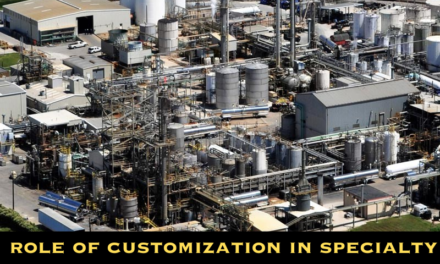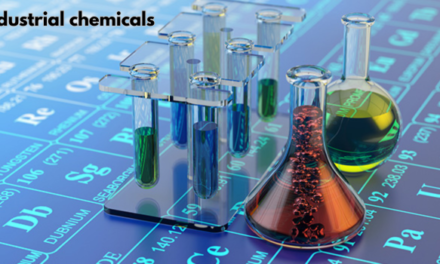Global growth hotspots for the petrochemical industry are concentrated in regions with strong demand drivers, abundant feedstock availability, strategic investments, and supportive government policies. These regions are shaping the future of the petrochemical market through capacity expansions, technological advancements, and export-oriented strategies. Below is an analysis of the key growth hotspots:
1. Asia-Pacific
- Key Drivers:
- Rapid urbanization, industrialization, and growing middle-class populations drive demand for petrochemical products like plastics, packaging, and synthetic fibers.
- High consumption of construction materials, automotive components, and consumer goods.
- Countries Leading Growth:
- China:
- The largest petrochemical consumer and producer globally, with significant investments in ethylene and propylene capacities.
- Focus on self-sufficiency to reduce reliance on imports.
- Example: Sinopec and BASF’s integrated petrochemical complexes.
- India:
- Rising demand for polymers and synthetic materials, driven by construction, automotive, and packaging industries.
- Increasing capacity expansions by companies like Reliance Industries.
- Southeast Asia:
- Countries like Thailand, Indonesia, and Vietnam are experiencing rapid growth due to export-oriented manufacturing and growing domestic markets.
- China:
- Challenges:
- Feedstock dependency, environmental regulations, and infrastructure gaps in emerging markets.
2. Middle East
- Key Drivers:
- Abundant and low-cost feedstocks (natural gas and crude oil).
- Government support for economic diversification, reducing reliance on crude oil exports.
- Countries Leading Growth:
- Saudi Arabia:
- Home to leading petrochemical producers like SABIC and Aramco.
- Focus on integrating refineries with petrochemical production for enhanced efficiency.
- Example: The $20 billion Jazan Economic City project.
- United Arab Emirates (UAE):
- Investments in advanced technologies and specialty chemicals.
- Example: Borouge’s polymer production expansions.
- Qatar:
- Expanding capacity for ethylene, polyethylene, and other petrochemical products using its vast natural gas reserves.
- Saudi Arabia:
- Challenges:
- Geopolitical risks and competition from emerging markets.
3. United States
- Key Drivers:
- Shale gas revolution providing low-cost ethane feedstocks for ethylene production.
- Strategic focus on export markets, particularly Asia.
- Growth Highlights:
- Massive investments in ethane crackers and derivative plants along the U.S. Gulf Coast.
- Increased exports of ethylene, polyethylene, and other petrochemical products.
- Example: ExxonMobil’s $10 billion petrochemical complex in Texas.
- Challenges:
- Regulatory scrutiny, environmental concerns, and competition from global players.
4. Europe
- Key Drivers:
- Shift toward sustainability and circular economy practices.
- High demand for specialty and high-value chemicals.
- Growth Highlights:
- Investments in recycling technologies and bio-based feedstocks.
- Focus on integrating renewable energy into petrochemical production.
- Example: BASF’s investments in chemical recycling under its ChemCycling initiative.
- Challenges:
- High energy costs and reliance on imported feedstocks.
5. Africa
- Key Drivers:
- Growing population and urbanization fueling demand for plastics, construction materials, and fertilizers.
- Abundant natural resources offering opportunities for feedstock production.
- Countries Leading Growth:
- Nigeria:
- Investments in large-scale petrochemical projects like the Dangote Refinery and Petrochemical Complex.
- Egypt:
- Strategic location for exports to Europe and Asia.
- Expanding capacity in fertilizers and polymers.
- Nigeria:
- Challenges:
- Infrastructure deficits and political instability in certain regions.
6. Latin America
- Key Drivers:
- Demand for construction materials, automotive components, and consumer goods.
- Rich feedstock availability in countries like Brazil and Argentina.
- Growth Highlights:
- Brazil’s focus on bio-based feedstocks, such as sugarcane ethanol for bio-polyethylene production.
- Mexico’s proximity to the U.S. driving investments in petrochemical exports.
- Challenges:
- Economic volatility and limited infrastructure.
7. Russia and CIS (Commonwealth of Independent States)
- Key Drivers:
- Vast hydrocarbon resources for low-cost feedstock production.
- Strategic focus on exports to Europe and Asia.
- Growth Highlights:
- Investments in large-scale petrochemical complexes, such as the Amur Gas Chemical Complex in Russia.
- Expansion of polymer production capacities for export markets.
- Challenges:
- Sanctions, geopolitical tensions, and reliance on export-driven growth.
8. Emerging Growth Areas
- Southeast Asia:
- Investments in integrated petrochemical hubs in Indonesia, Malaysia, and Vietnam.
- Central Asia:
- Kazakhstan and Uzbekistan focusing on leveraging natural gas resources for petrochemical development.
- Australia:
- Growing focus on specialty chemicals and leveraging LNG exports for downstream petrochemical production.
Global Trends Shaping Growth
- Sustainability:
- Investments in bio-based feedstocks, chemical recycling, and circular economy practices across regions.
- Technological Advancements:
- Adoption of AI, IoT, and advanced manufacturing technologies to improve efficiency and reduce emissions.
- Shifting Trade Dynamics:
- The rise of Asia-Pacific and Middle Eastern players challenging traditional dominance by the U.S. and Europe.
- Policy and Regulation:
- Supportive government policies and economic diversification initiatives are driving investments in key growth regions.
Conclusion
The petrochemical industry’s growth hotspots are concentrated in Asia-Pacific, the Middle East, and the U.S., with emerging opportunities in Africa, Latin America, and Southeast Asia. These regions are leveraging feedstock advantages, growing domestic markets, and export potential to drive investments and capacity expansions. As sustainability and innovation become critical drivers, regions that embrace these trends will remain at the forefront of the petrochemical industry’s global growth trajectory.
Hashtags
#PetrochemicalGrowth #GlobalPetrochemicals #PetrochemicalTrends #IndustryHotspots #Petrochemicals2024 #MiddleEastPetrochemicals #AsiaPetrochemicalHub #USShaleGrowth #PetrochemicalsInAfrica #LatinAmericaChemicals #EmergingMarkets #GlobalMarketTrends #PetrochemicalEconomy #MarketExpansion #EconomicGrowthDrivers #PetrochemicalInnovation #AdvancedManufacturing #SmartPetrochemicals #TechForGrowth #InnovationInChemicals #GreenPetrochemicals #SustainableGrowth

















